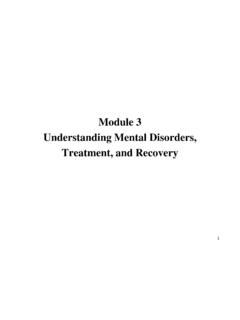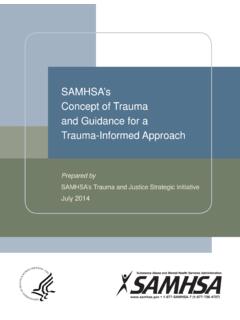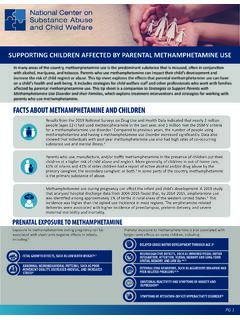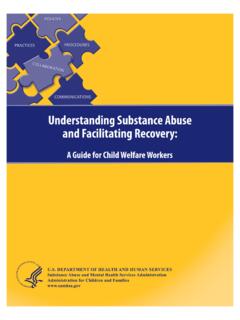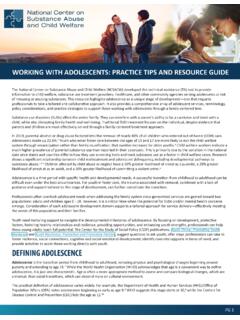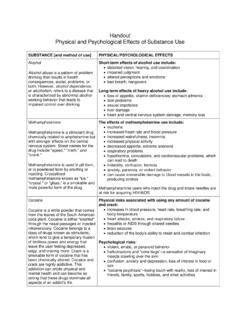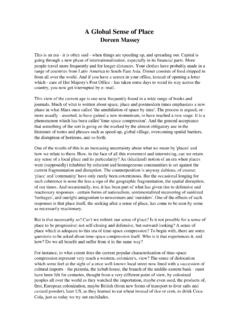Transcription of Appendix D: Examples of Screening and Assessment Tools …
1 D-1 Appendix D Examples of Screening and Assessment Tools for Substance Use Disorders D-3 Examples of Screening and Assessment Tools for Substance Use Disorders This Appendix provides information about and samples of Screening and Assessment Tools for substance use disorders. In the description of each tool , the definition follows the tool acronym. These Tools should be used to support ongoing processes that involve regular communication among staff and between staff and families. Tools by themselves do not provide answers to complicated issues such as substance use disorders and child maltreatment. They can, however, contribute to decisions about whether problems exist, the nature and extent of those problems and what actions all three systems child welfare, alcohol and drug, and court should take to address problems. Screening Tools for Substance Use Disorders Screens for substance use disorders tend to fall into two categories: brief screens of six or fewer items that can be asked orally in the context of an interview or other exchange or longer written questionnaires that are completed by the respondent.
2 Both types are provided here. The oral screens may be more practical for fieldwork and home visits; however, in office settings, the written screens could be employed to collect information while people are waiting for appointments or used as a means by which clerical or other staff can collect information. None of the standard screens address the issue of immediacy in terms of requiring immediate action. Issues of whether immediate actions are required are more likely to involve observations indicating intoxication or withdrawal or indications of impaired functioning. A combination of observational information plus results from systematic Screening would be one strategy for formulating a basis for immediate action as well as assessing the need for further diagnostic Assessment . These Screening Tools provide information to answer the questions Is there a substance abuse issue?
3 What is the immediacy of the issue? They include information about Screening Tools for adults and adolescents. This list is in alphabetical order based on the tool acronym. In addition, the Center for Substance Abuse Treatment (CSAT) has approved Treatment and Assessment Protocols for Adolescent Treatment. They can be accessed at D-4 ADULT SUBSTANCE USE SURVEY (ASUS) The ASUS (Adult Substance Use Survey) is a 64-item self-report survey designed to assess an individual s perceived alcohol and other drug use. This survey also provides a brief mental health screen by including questions that might indicate problems of emotional or mood adjustment. Scales measuring antisocial tendencies, perceptual defensiveness, and motivation are also included. This multivariate instrument is part of the Standardized Offender Assessment package in a number of States, including Colorado.
4 Administrative Issues 64 items Paper-and-pencil self-administered or orally administered Time required: 8 to 10 minutes to administer, less than 5 minutes to score Scoring Scored by tester No computerized scoring or interpretation available Clinical Utility Norms available The items are face valid, so the client is clear about what is being asked. Items that are difficult to understand can be reworded by the tester, or explained, so that the most accurate information is obtained. The defensiveness scale is a helpful tool to measure the extent to which the client is able to report information openly and honestly, or whether information is being distorted by perceptual defensiveness. This screen also can be re-administered over the course of the treatment process, to ascertain whether clients level of defensiveness has decreased, and whether their perception of their substance use and its effects has changed.
5 Copyright Cost Source Copyrighted Test and manual are free; training module costs $75. Center for Addiction Research and Evaluation, Inc. (CARE) 5460 Ward Road, Suite 140 Arvada, CO 80020 Phone: 303-421-1261 D-5 ALCOHOL USE DISORDERS IDENTIFICATION TEST (AUDIT) The AUDIT (Alcohol Use Disorders Identification Test) was developed by the World Health Organization to identify persons whose alcohol consumption has become harmful or hazardous to their health. The AUDIT is not designed to identify substance use disorders according to diagnostic criteria. The AUDIT is designed for written administration, but is short enough to be read to a respondent for oral administration. This test is among the more widely used screens, but its utility in identifying whether an individual is likely to meet diagnostic criteria is not clear. Administrative Issues 10 items, 3 subscales Pencil-and-paper self-administered or interview Time required: 2 minutes Administered by health professional or paraprofessional Training required for administration.
6 A detailed user s manual and a videotaped training manual explain proper administration procedures, scoring, interpretation, and clinical management. Scoring Time required: 1 minute Scored by hand No computerized scoring or interpretation available Norms available Normed on heavy drinkers and alcoholics An easy-to-use brochure has been designed to guide the interviewer and to assist with scoring and interpretation. Clinical Utility The AUDIT Screening procedure is linked to a decision process that includes brief intervention with heavy drinkers or referral to specialized treatment for patients who show evidence of more serious alcohol involvement. This Screening procedure assesses risky drinking rather than the presence of a diagnosable disorder other than alcohol use disorder. The AUDIT does not screen for drugs. Copyright Cost Source Copyrighted Test and manual are free; training module costs $75.
7 Programme on Substance Abuse World Health Organization 1211 Geneva, Switzerland or Thomas F. Babor Alcohol Research Center University of Connecticut, Farmington, CT D-6 CAGE The CAGE, a very brief screen, is probably the most widely used and promoted for the detection of alcohol problems in the United States. It is one of the screens most consistently promoted for use among medical professionals to identify individuals likely to have substance use disorders. Administrative Issues Four items Paper-and-pencil self-administered or orally administered Time required: less than 1 minute Administered by professional or technician No training required for administration, easy to learn, easy to remember, easy to replicate Scoring Time required: instantaneous A total score of 2 or more indicates the need for further Assessment . Scored by tester No computerized scoring or interpretation available Norms available Clinical Utility The CAGE is a favorite of physicians and nurses because of its brevity.
8 It is not based on the Diagnostic and Statistical Manual of Mental Disorders, 4th Edition (DSM-IV) and therefore does not discriminate between abuse and dependence, is relatively insensitive to women, and is subjective; relies on the individual s ability to experience guilt and one of the four items identifies only late stage alcohol problems. Some of the items address abuse and dependence criteria but, because of some of the limitations, may not be the optimal screen for most child welfare applications. In its original form, it does not screen for drug-related problems. Copyright Cost Source No copyright. Published in the American Journal of Psychiatry None Copies can be found on a number of Internet sites or by obtaining the original 1974 publication. D-7 CAGE AID MODIFICATION The CAGE has been modified to screen for drug as well as alcohol problems by adding or use (using) drugs to the original questions.
9 Some versions of the modification screen for drugs only; most screen for both. The CAGE AID demonstrates all limitations of the CAGE, and there are many different variations in the language of the items, including even changes in the original CAGE items. Like the CAGE, the modification should be considered a less than an optimal Screening instrument for most child welfare applications. CRAFFT The CRAFFT is a six-item screen for both alcohol and drug use among adolescents. This screen focuses more on risky drinking than on diagnostic issues and does not discriminate between risky drinking, abuse, and dependence. Administrative Issues Six items, yes/no answers Paper-and-pencil self-administered or orally administered Scored by tester No computerized scoring or interpretation available Norms unavailable Scoring Time required: less than 1 minute Two or more yes answers indicate need for further Assessment Scored by tester No computerized scoring or interpretation available Clinical Utility The CRAFFT, a relatively new instrument (2002), screens for both alcohol and drug problems but focuses more on risky drinking than on diagnosing abuse or dependence.
10 Only three of the six items are related to the DSM-IV diagnostic criteria for substance use disorders. One of six items ( Have you ever ridden in a car driven by someone (including yourself) who was high or who was using alcohol or drugs? ) has potential for increasing positive responses and lowering specificity. Copyright Cost Source Copyrighted by Children s Hospital Boston, 2001 No cost, but approval for copies must be obtained from the Center for Adolescent Substance Abuse Research (CEASAR), Children s Hospital Boston D-8 DRUG ABUSE Screening TEST (DAST) All the DAST (Drug Abuse Screening Test) versions screen for problems with the use of drugs only. The DAST-10 (Drug Abuse Screening Test-10) is the shortened and more commonly used version of a 20-item (DAST-20) or the original 28-item version. The DAST is sometimes combined with the AUDIT or other alcohol screens to cover both alcohol- and drug-related problems.
